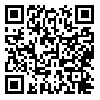Volume 11, Issue 6 (1-2012)
Iranian Journal of Medical Education 2012, 11(6): 620-634 |
Back to browse issues page
Download citation:
BibTeX | RIS | EndNote | Medlars | ProCite | Reference Manager | RefWorks
Send citation to:



BibTeX | RIS | EndNote | Medlars | ProCite | Reference Manager | RefWorks
Send citation to:
Vahedian Azimi A, Alhani F, Hedayat K. Barriers And Facilitators Of Patient's Education: Nurses’ Perspectives. Iranian Journal of Medical Education 2012; 11 (6) :620-634
URL: http://ijme.mui.ac.ir/article-1-1819-en.html
URL: http://ijme.mui.ac.ir/article-1-1819-en.html
, alhani_f@modares.ac.ir
Abstract: (16733 Views)
Introduction: Patient education and his/her partnership during hospitalization and at discharge time is essential. The aim of this study is to describe nurses’ experiences of barriers and facilitators of patient education in year 2008 at Shariati Hospital in Tehran (SHT). Methods: The present study is a triangulation research with three steps Delphi method. Participants included 25 nursing staff (1 matron, 8 supervisors, 8 head nurses and 8 nurses). Data were collected in the nursing office and different wards. Data collection methods were an unstructured interview, followed by a questionnaire from interviews, and in the third step, focused groups. Results: Mean and Standard deviation of age and working experience of participants were 42/20±6/14 and 14/84±6/20 years, respectively. Most important barriers according to the third step were: nurses’ low scientific knowledge and information, shortage of nursing manpower, excessive workload, manner of clinical supervision and feedback, and extra tasks demanded due to working in a teaching hospital. The most important facilitators were found to be: developing patient education protocols for each ward, according to needs assessment, revision in supervision and feedback system, establishing a good relationship between patients and nurses and physicians, assigning a rotating nurse for patient education, and running educational courses for nurses as a part of their duty time. Conclusion: The described barriers and facilitators for patient education have a multidimensional nature. Therefore, it may be suggested that authorities should undertake systematic and comprehensive measures to provide facilities and opportunities for programs on patient education and self-care programs based on their needs in clinic.
Type of Study: Original research article |
Subject:
Clinical Teaching
Received: 2011/10/13 | Accepted: 2011/10/13 | Published: 2012/01/15 | ePublished: 2012/01/15
Received: 2011/10/13 | Accepted: 2011/10/13 | Published: 2012/01/15 | ePublished: 2012/01/15
Send email to the article author
| Rights and permissions | |
 |
This work is licensed under a Creative Commons Attribution-NonCommercial 4.0 International License. |




